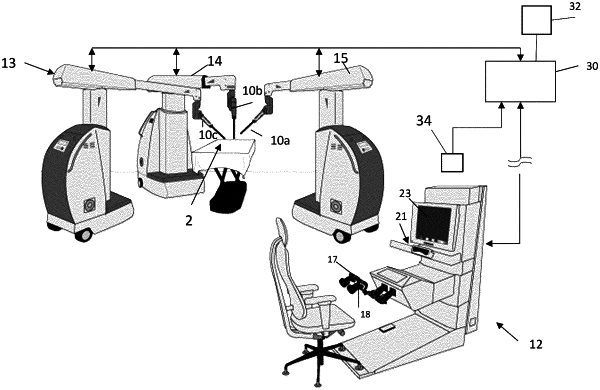| CPC A61B 34/37 (2016.02) [A61B 1/04 (2013.01); A61B 34/74 (2016.02); A61B 34/77 (2016.02); A61B 90/361 (2016.02); A61B 90/37 (2016.02); A61B 1/3132 (2013.01); A61B 2017/00216 (2013.01); A61B 2034/2059 (2016.02); A61B 2034/2065 (2016.02); A61B 2034/254 (2016.02); A61B 2034/258 (2016.02); A61B 2034/302 (2016.02)] | 8 Claims |

|
1. A robot-assisted surgical system, comprising:
a first manipulator configured for robotic positioning of a first surgical instrument in a body cavity, the first surgical instrument having a first end effector;
a second surgical instrument positionable in the body cavity, the second surgical instrument having a second end effector;
a camera positionable in the body cavity to capture images of the first end effector and the second end effector within the body cavity;
at least one user input device moveable by a user;
at least one processor and at least one memory storing instructions executable by said at least one processor to;
receive user input from the input device and causing the first manipulator to move the first surgical instrument in response to the user input based on a scaling factor;
perform computer vision analysis of the images to determine a location of a first reference point comprising a portion of said first surgical instrument end effector;
perform computer vision analysis of the images to determine a location of a second reference point comprising a portion of said second surgical instrument end effector;
determine a distance between the first and second reference points, and
adjusting the scaling factor based on the determined distance.
|